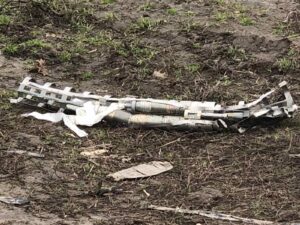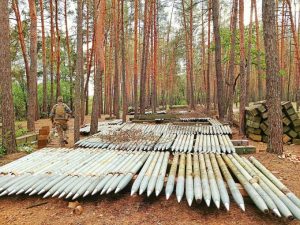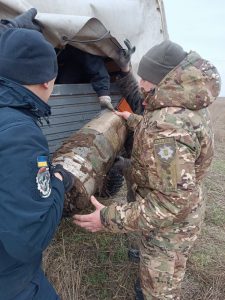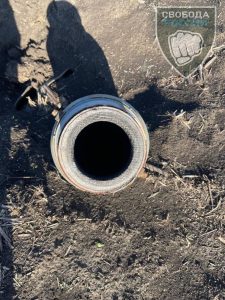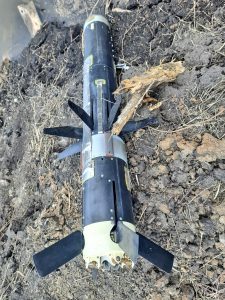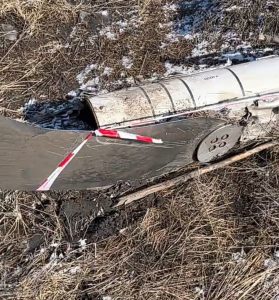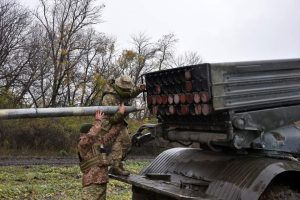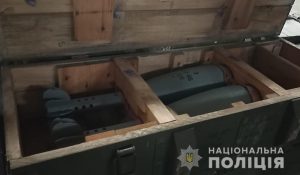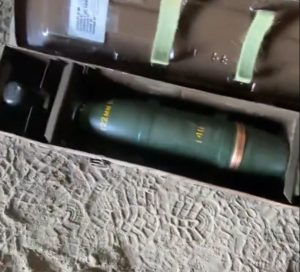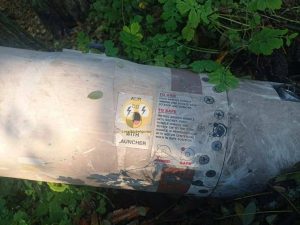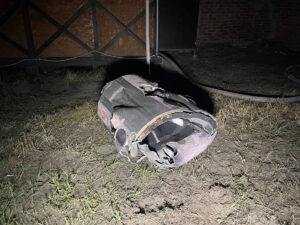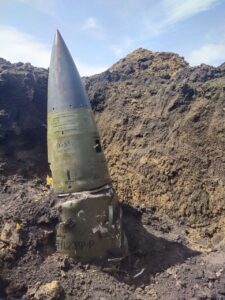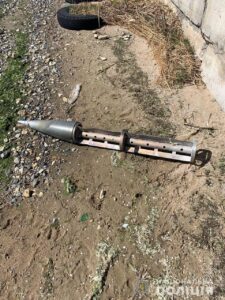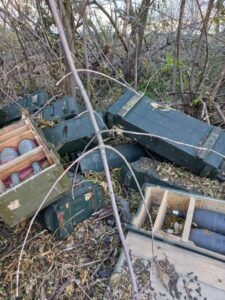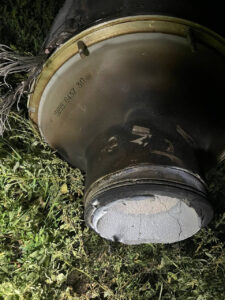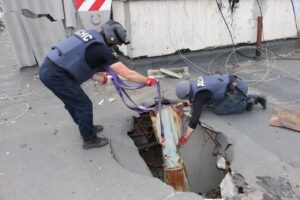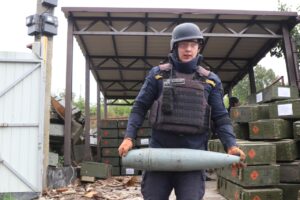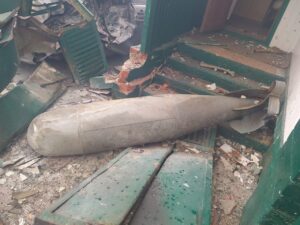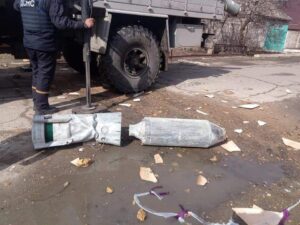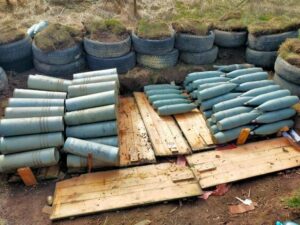OSMP Collection
Ukraine 2022 – 2024
On 24 February 2022, Russia launched a full-scale invasion of Ukraine, with forces seeking to capture most major cities – including the capital Kyiv. This marked the largest conflict in Europe since the Second World War, and around a quarter of Ukrainian territory fell under Russian control – though its forces were repelled from Kyiv. Later that year, a Ukrainian counter-offensive reclaimed a number of key regions, including the second largest city Kharkiv.
After the initial invasion and counter-offensive, the war has been characterised by relatively static and well-fortified front lines—an unusual trend in 21st-century warfare. Both sides have deployed significant quantities of heavy weapons, in particular artillery guns and mortars. Unmanned aerial vehicles, including so-called ‘kamikaze’ or ‘sacrificial’ drones, have also been widely used. The air space remains contested, so the use of air-delivered munitions has been less common than in other modern conflicts.
While Russian military action has been documented across the whole of Ukraine, the oblasts in eastern Ukraine near the Russian border have seen the most intense fighting. By May 2024, Ukrainian hopes of a breakthrough appeared to have dampened, with Russian forces believed to hold a numerical and military advantage in many places.













